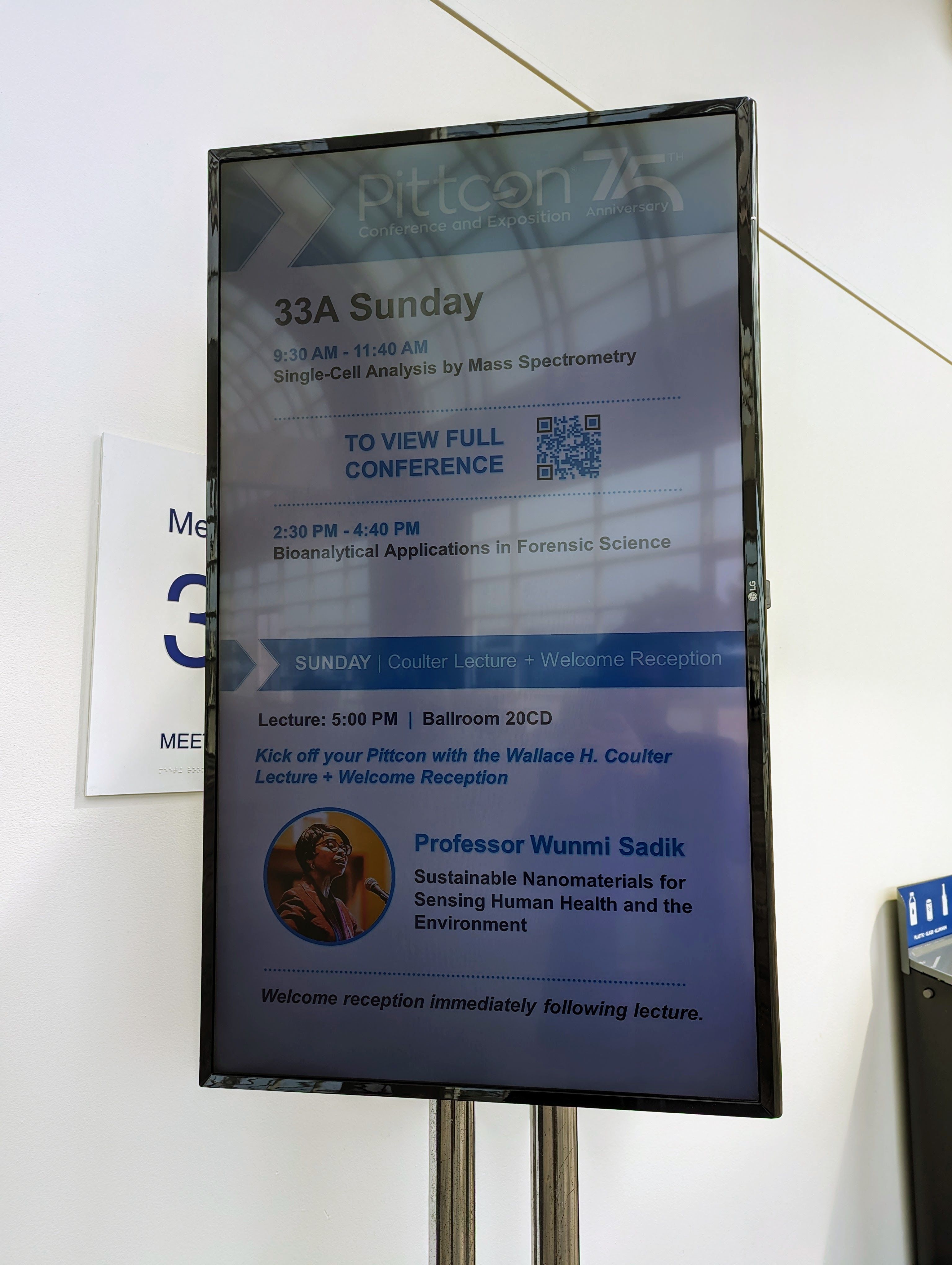Demystifying Single-Cell Analysis Challenges at Pittcon
At Pittcon 2024, Pittsburgh Analytical Chemistry Award winner John Yates headlined a symposium focusing on perfecting proteome research down to the single-cell level.
“Buy me some wine and I’ll share a great idea with you.”
Such are the inherent challenges in applying top-down proteomics to cell-to-cell cardiomyocyte analysis that the process might seem more like a pipe dream to be discussed over drinks, not put to the test in a lab.
But it was the pitch recently posed by John Yates, professor with the Scripps Research Institute in San Diego, California and the 2024 Pittsburgh Analytical Chemistry Award honoree, to Jennifer Van Eyk, who heads a lab at Cedars-Sinai Medical Center in Los Angeles, California (1).
Yates and Van Eyk were joined by fellow presenters Theodore Alexandrov, team leader and head of the Metabolomics Core Facility at the European Molecular Biology Laboratory (EMBL) and BioInnovation Institute (BII), and Ying Zhu, senior principal scientist at Genentech in South San Francisco, California, in a symposium titled “Single-Cell Analysis by Mass Spectrometry.”
Pittcon 2024 | Image Credit: Patrick Lavery

The symposium was just one of many kicking off the first full day of Pittcon 2024, the 75th anniversary edition of the Pittsburgh Conference on Analytical Chemistry and Applied Spectroscopy, held this year in San Diego.
Which Way to Proteomics Analysis?
Although Yates and Van Eyk’s talks, which were the first two of the quartet, were the most interconnected, Yates took a slightly more technical approach in explaining that top-down proteomics often takes a back seat to bottom-up proteomics mainly because the latter approach is simpler. In his presentation, “Capturing Cardiomyocyte Cell-to-Cell Heterogeneity Via Shotgun Top-Down Proteomics,” he illustrated both the historical progression of proteomics and the application hierarchy of needs in graphical pyramids both ending with “success” at the zenith.
Top-down proteomics involves the analysis of intact proteins, providing direct insight into their full sequences and post-translational modifications (altered protein structure and function). In contrast, bottom-up proteomics breaks proteins into smaller peptides through enzymatic digestion before analysis, yielding more details of the proteome but often losing information on protein isoforms (slightly different versions of a protein).
According to Yates, single-cell top-down proteomics is especially tricky when high throughput is desired, and he described several analytical methods for the evaluation of cardiomyocyte cells—an excellent target, he said—including size-exclusion chromatography (SEC) followed by multiple stages of mass spectrometry (MS), or the application of capillary electrophoresis (CE) in a few studies.
Among the findings Yates summarized about his research was that the adenosine triphosphate (ATP) synthesis protein was identified consistently in analysis, and that a top-down methodology achieved the discovery of significant numbers of unique proteoforms in cardiomyocytes.
He encouraged scientists working on these types of concepts to submit their work to the Journal of Proteome Research, of which he is currently the editor-in-chief.
All Mice are Not Created Equal
Van Eyk took that research a step further into the practical world in her presentation, “Individualizing Cardiovascular Therapies and the Role of Single-Cell Proteomics” (2).
“What happens if you don’t have the right therapeutics?” she asked. “What do you do when you think about making, truly, a drug that will work for you, or drug combinations? We’ve been thinking about this for a while, and certainly have not solved it.”
With the chilling background statistic that one person in the United States is diagnosed with heart failure every 1.14 minutes, with around just a 40% survival rate of heart disease, still the nation’s number-one killer, after one year, Van Eyk’s lab set out to test individualized therapy based on proteomics using inducible pluripotent stem cells (IPSCs)—a tough sell in the field of cardiology, which has been slow to accept single-cell proteomics.
Van Eyk described the administration of a drug called PR-364 in male lab mice who previously were being treated as if they were having heart attacks. (As in humans, male and female mice experience cardiac events differently, and so this drug was not expected to work similarly for all subject tested.) And IPSCs, Van Eyk said, are themselves controversial among analytical chemists; she said they’re much like opposing views in politics, you either believe them or you don’t. But hundreds of different IPSC lines were yielded in a high-throughput system, though Van Eyk said the process remained too slow.
Overlooking the San Diego Convention Center | Image Credit: Patrick Lavery

Speeding it up, and doing so without killing off cells, are two of the objectives of continuing research in this area, but Van Eyk cautioned scientists that they had better get to the root of single-cell data in drug development if they want drugs that work as effectively as intended.
Making the ‘Hardly Possible’ More Possible
Single-cell metabolomics, in relation to where transcriptomics was about seven years ago, is now recognized as one of the top 10, if not higher, emerging technologies in chemistry, at least according to Alexandrov and his presentation, “13C-SpaceM: Spatial Single-Cell Isotope Tracing Reveals Heterogeneity of De Novo Fatty Acid Synthesis in Cancer” (3). The novel method listed in the title of Alexandrov’s talk was described as a tool for the detection of D-glucose-13C6.
To put it more practically, Alexandrov’s research sought to synthesize fatty acids (FAs) in liver cancer cells. In most cases, he said, FAs are created from palmitates, and this provides a clue to trace both the activity and role of glucose using lipids as a “sink,” with FAs being fragments of whole lipids.
According to Alexandrov, the 13-SpaceM process is designed to be highly-multiplex, high-throughput, reproducible, and compatible with almost any cell type. His presentation reviewed a sequence beginning with cells, put through microscopy, then matrix-assisted laser desorption–ionization (MALDI) imaging, to a final production of single-cell metabolite images. MALDI, he said, creates a “micro-explosion” of the cell prior to the MS portion of analysis.
There remains the question of isotope tracing, however, and the consideration of whether the isotopes being analyzed are naturally occurring or isotopically enriched. Imaging mass spectrometry (IMS) can map metabolic activity, Alexandrov said, but up to now it has been hardly possible on the single-cell level because of sensitivity. However, he added, single-cell technology if deployed effectively can better infer and predict spatial heterogeneity.
Mass Spectrometry Widens Protein Mapping
The final presentation of the session, by Zhu, “Deep Spatial Proteomics at Subcellular Resolution with Laser Ablation and Microfluidic Sample Preparation,” looked at the advantages of one-step deep ultraviolet laser ablation (DUV-LA) of human pancreatic tissue (4). The main question Zhu asked was: How can scientists make the measurements they want to make, at the highest resolutions possible? Specifically, how can they capture the single cell at its highest resolution?
In terms of analytical techniques for proteomics, Zhu said, researchers have now gotten as detailed as nano-high performance liquid chromatography (HPLC) with capillary electrophoresis. And he added that a proteome map can potentially yield somewhere in the neighborhood of 3500 proteins in pancreatic tissue when focusing on the top-down gradient in the analysis of spatially variable proteins. Mass spectrometry, he said, expands the field of potential findings from fewer than 50 targets with affinity reagents to more than 5000.
But the specifications of what a scientist is looking for matter as well, Zhu said. For protein targets, is it a targeted or antibody-based analysis, or non-targeted? And is the proteomic strategy isobaric labeling-based, or label-free?
There are also concerns with tissue microsampling limitations, and of course microfluidics must be considered with regard to sample preparation; this can reduce surface loss, increase concentrations, and reduce contaminations, among other factors.
Pittcon 2024 | Image Credit: Patrick Lavery

These four presentations provided a comprehensive overview of mass spectrometry’s role in refining single-cell analysis, and the scholars who spoke laid a groundwork for taking their research out of the lab and into the industrial world, to better inform decisions about disease diagnosis, treatment, and drug development.
References
(1) Yates, J. Capturing Cardiomyocyte Cell-to-Cell Heterogeneity via Shotgun Top-Down Proteomics. Presented at the 75th Pittsburgh Conference on Analytical Chemistry and Applied Spectroscopy, San Diego, California, February 25, 2024.
(2) Van Eyk, J. Individualizing Cardiovascular Therapies and the Role of Single-Cell Proteomics. Presented at the 75th Pittsburgh Conference on Analytical Chemistry and Applied Spectroscopy, San Diego, California, February 25, 2024.
(3) Alexandrov, T. 13C-SpaceM: Spatial Single-Cell Isotope Tracing Reveals Heterogeneity of De Novo Fatty Acid Synthesis in Cancer. Presented at the 75th Pittsburgh Conference on Analytical Chemistry and Applied Spectroscopy, San Diego, California, February 25, 2024.
(4) Zhu, Y. Deep Spatial Proteomics at Subcellular Resolution with Laser Ablation and Microfluidic Sample Preparation. Presented at the 75th Pittsburgh Conference on Analytical Chemistry and Applied Spectroscopy, San Diego, California, February 25, 2024.
Silvia Radenkovic on Her Research and Passion for Scientific Collaboration
April 3rd 2025Radenkovic is a PhD candidate at KU Leuven and a member of FeMS. Her research focuses on inborn metabolic disorders (IMD), like congenital disorders of glycosylation (CDG), omics techniques such as tracer metabolomics, and different disease models.
Study Explores Thin-Film Extraction of Biogenic Amines via HPLC-MS/MS
March 27th 2025Scientists from Tabriz University and the University of Tabriz explored cellulose acetate-UiO-66-COOH as an affordable coating sorbent for thin film extraction of biogenic amines from cheese and alcohol-free beverages using HPLC-MS/MS.
Quantifying Microplastics in Meconium Samples Using Pyrolysis–GC-MS
March 26th 2025Using pyrolysis-gas chromatography and mass spectrometry, scientists from Fudan University and the Putuo District Center for Disease Control and Prevention detected and quantified microplastics in newborn stool samples.






